All about verbena ampelous
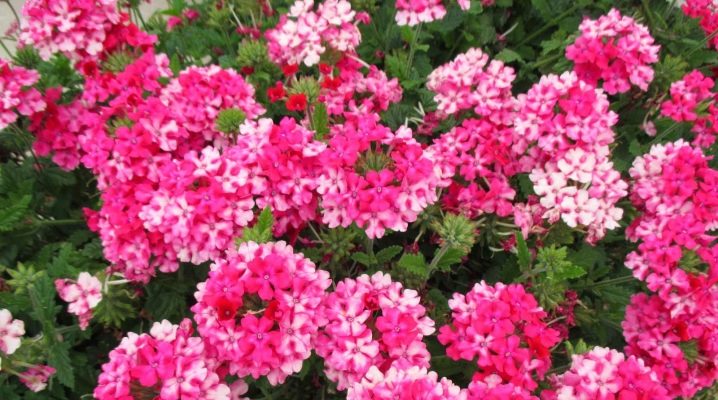
Verbena is an ornamental plant that has a strong position in horticultural gardens. The culture has a unique spectrum of colors and shades. The ampelous type is especially popular.
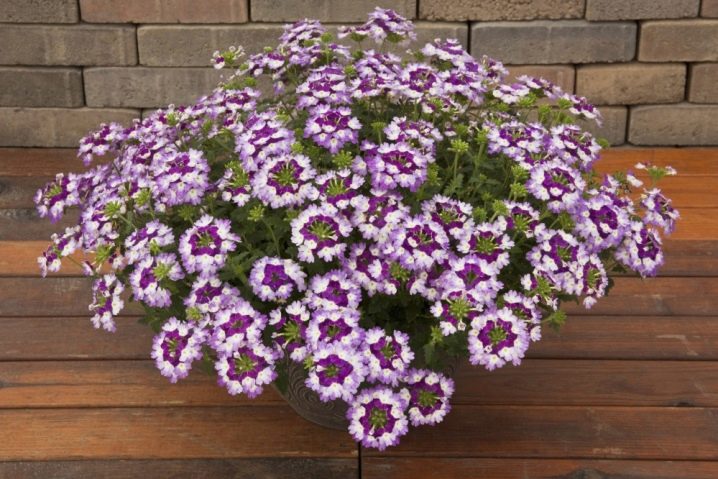
general description
Verbena belongs to perennial plants, but in temperate latitudes it is used as an annual crop, since it cannot withstand the harsh winter conditions. The shoots of the ampelous beauty reach 60 cm, so its ideal localization is a hanging planter or a high flower bed. In this case, the plant forms a lush cascade, covered with bright flowers of intense color. The predominant tones will be cherry, blue, lilac, red, salmon, pink, white and a lot of intermediate shades.
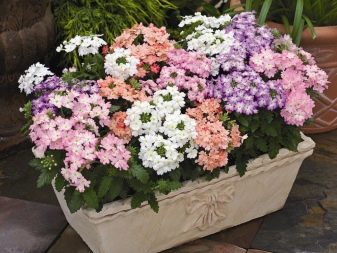
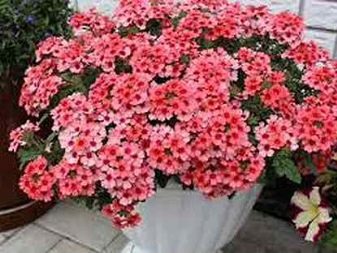
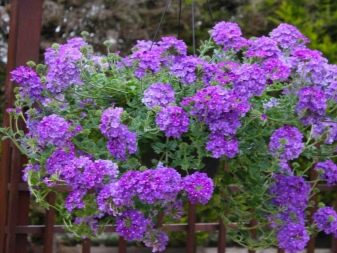
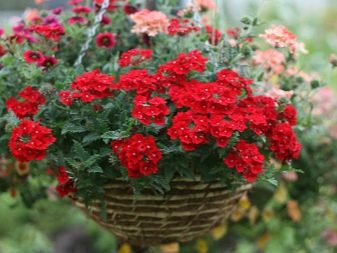
Verbena shoots have an excellent ability to actively grow, therefore they quickly fill the surrounding space. Small (0.5 cm) flowers cover almost half of the vegetative mass and look very elegant against the background of dark greenery. At the same time, verbena attracts a variety of insects as an excellent food base, these are:
- butterflies;
- caterpillars;
- various other insect greens lovers.
This should be remembered and do not forget to carefully examine the flowers.
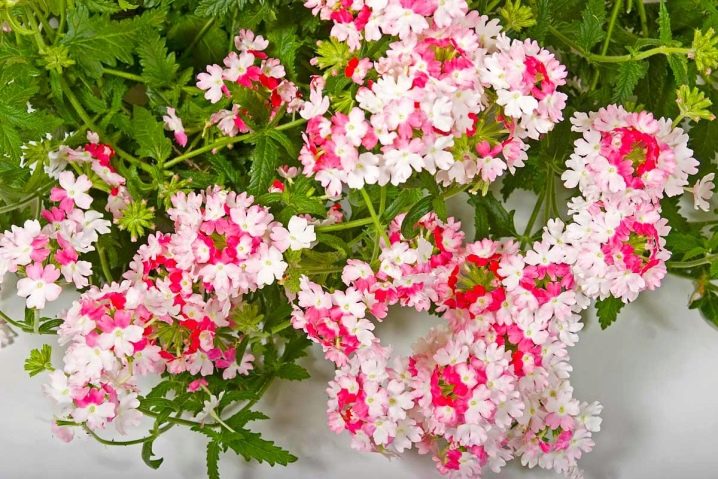
In addition, verbena has medicinal properties, but rather, it refers to medicinal verbena - a herbaceous perennial wild plant. It is better not to use decorative species in traditional medicine.... The culture grows well and develops both in the garden on the flower bed and in the pots on the windowsill.
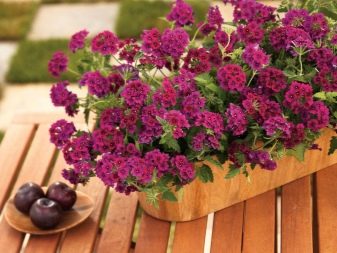
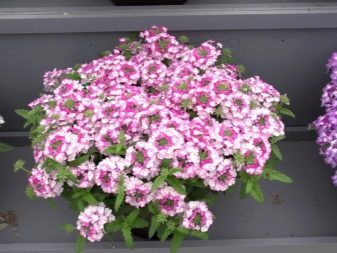
Habitat:
- subtropics;
- temperate latitudes;
- tropics.

The leaves of the ampelous verbena are small, slightly pubescent, inconspicuous, serve as a perfect background for bright inflorescences.
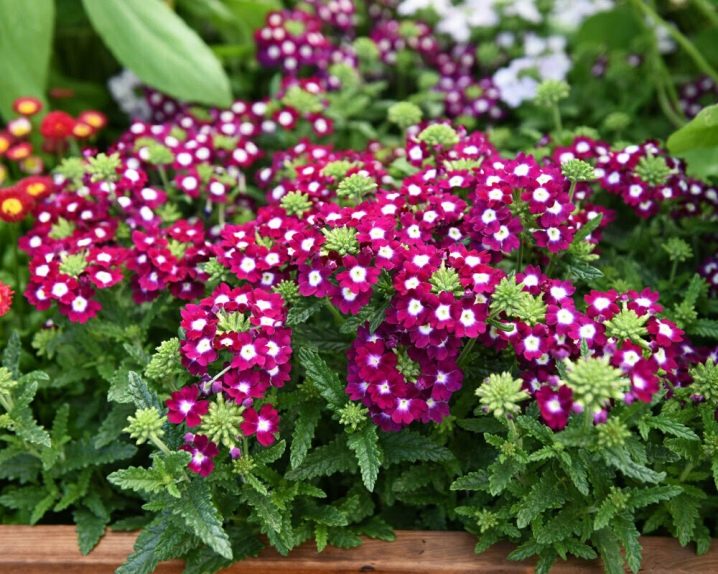
Fans of vervain know about two and a half hundred varieties, but only a few of them are generally popular.
Popular varieties
Due to its high decorativeness, ampelous verbena is in high demand, and it grows every year. Below are the most famous varieties found in garden plots.
- Imagination which in translation means "fantasy, imagination". The color of the flowers is unusually beautiful and resembles the mysterious night sky with its blue-violet hues. The average shoot length is 50 cm, the green cap is covered with large inflorescences. The color intensity can weaken with a lack of nutrition, so the variety needs regular fertilizing with complex mineral fertilizers for flowering plants.
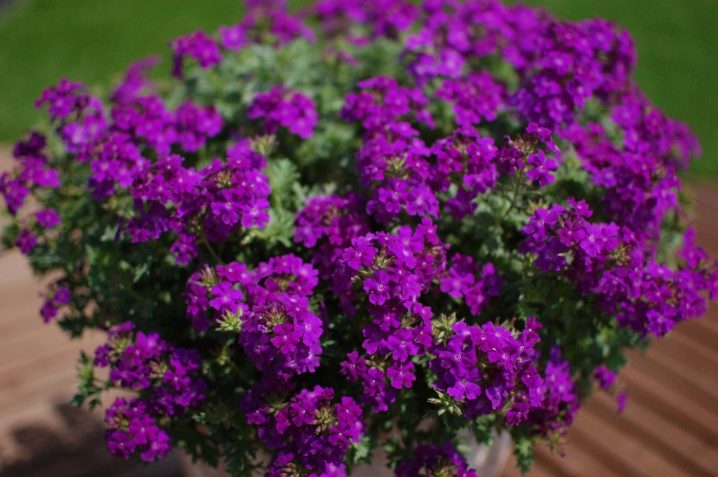
- Tiara Red Impr it is distinguished by a dense head of carmine-red inflorescences, almost hiding the green mass of the deciduous cover. Flowering is not only abundant, but also long-lasting. The variety is characterized by rapid growth: within a month, the shoots grow up to 50 centimeters.
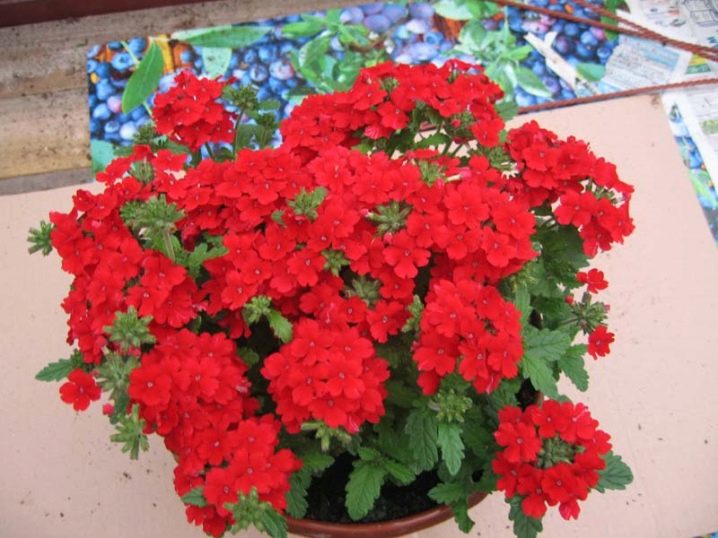
- Tapien. The variety has a lush bush, consisting of many highly branched shoots, covered with small dissected leaves. The shade range of corymbose inflorescences is distinguished by a great variety, duration of flowering and a white core. Tapien is quite resistant to disease, if you follow the conditions of agricultural technology.
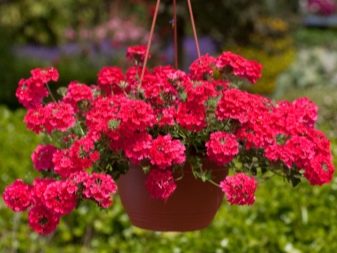
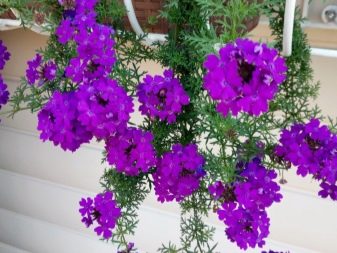
- "Impress Peach" (Empress Peach). Creamy inflorescences decorate a cascade of lush half-meter shoots, giving them an airy, delicate, attractive appearance. The plant needs abundant watering during the growing season.A healthy flower is able to bloom throughout the summer season.
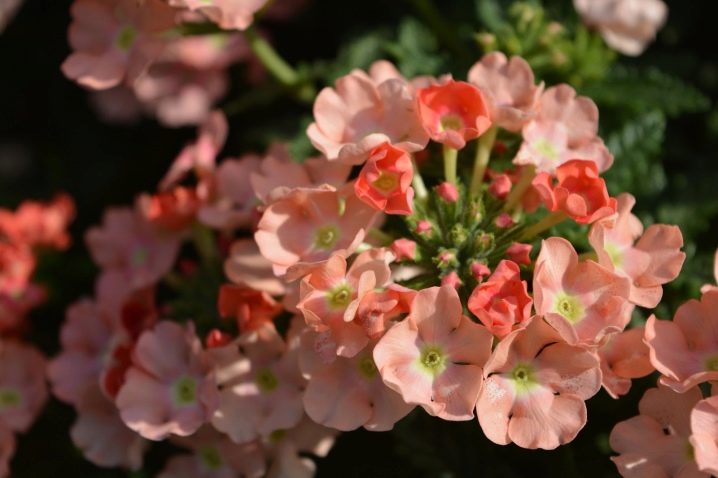
- "Temari" (Temari). The variety has a strikingly beautiful set of shades: pink, lilac, deep purple. The unpretentious flower grows long shoots with whole foliage, almost devoid of dissection.
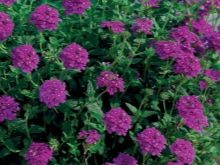
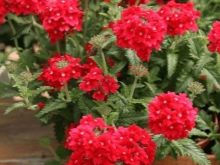
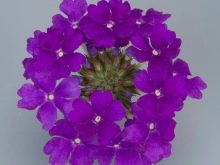
- Estrella Voodoo Star. The variety builds up a dense vegetative mass, the length of the shoots is 40 cm. The inflorescences are painted in red and white shades, the plant looks elegant and festive. Differs in strong immunity, tolerates short-term drought well.
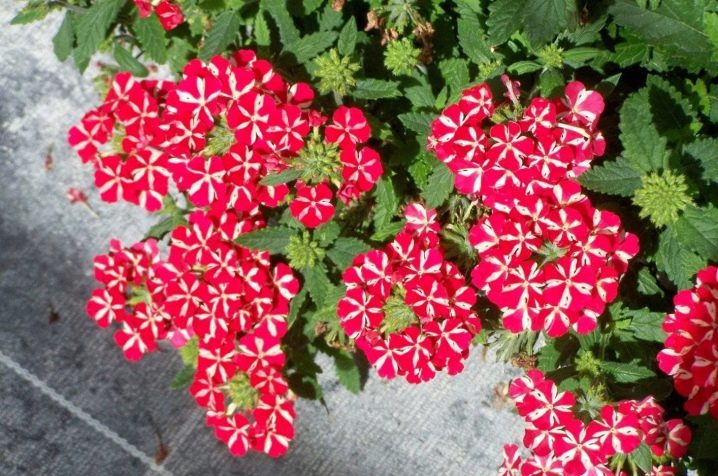
- "Amethyst". The variety is represented by a blue color palette. For optimal development, the plant needs good light and a breathable potting mix. "Amethyst" looks good in group plantings. The length of the shoots is 40 cm, the plant can withstand light frosts.

- Quartz XP Silver... A compact plant with shoots up to 30 centimeters long, covered with large inflorescences of silvery-white and light lilac shades.
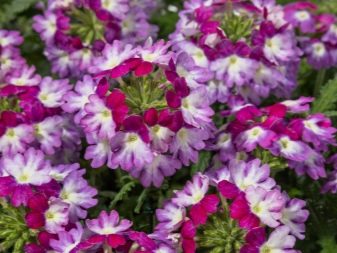
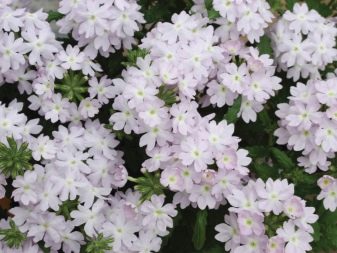
- Lanai Candy Cane... A relatively young variety with white and raspberry corymbose inflorescences. Shoots 45 cm long are covered with numerous small leaves. The flowering period is from May to the onset of the autumn cold.
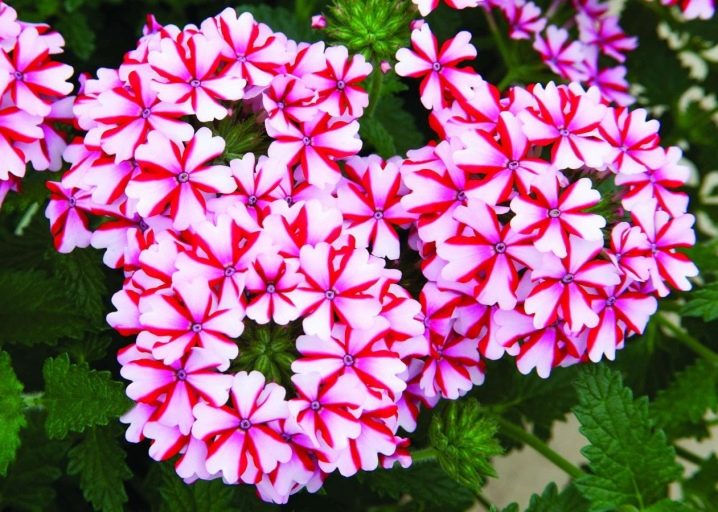
- "Obsession cascade". The compact annual is prone to the development of many lateral shoots. Abundant flowering, large (up to 7 cm) inflorescences are colored in various tones of wine-red.
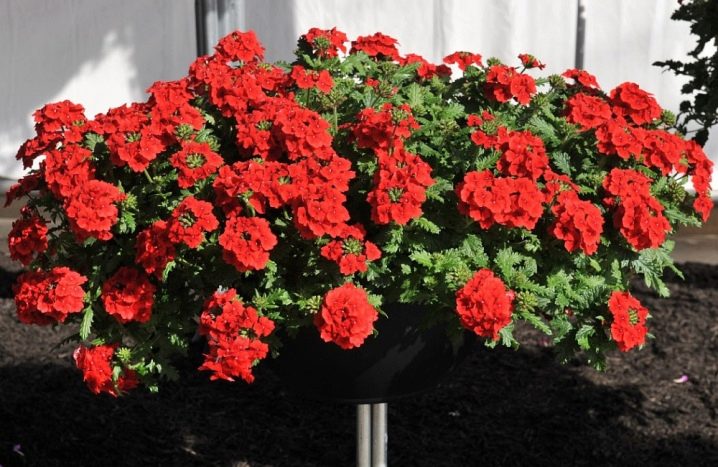
Some varieties can only be obtained by vegetative propagation. Differences from seed-propagated varieties lie in the size of the inflorescences. Vegetative terry verbena produces larger, denser, voluminous and rounded inflorescences.
Landing
Verbena belongs to unpretentious plants, but certain agronomic rules exist. You should not forget about them in order to grow a beautiful and healthy plant with a magnificently blooming crown. Care and regular implementation of certain procedures will not only ensure full flowering, but also serve as the prevention of diseases and pest damage. Some varieties of verbena are able to withstand short-term frosts, but a strong drop in temperature has a detrimental effect on the plant.
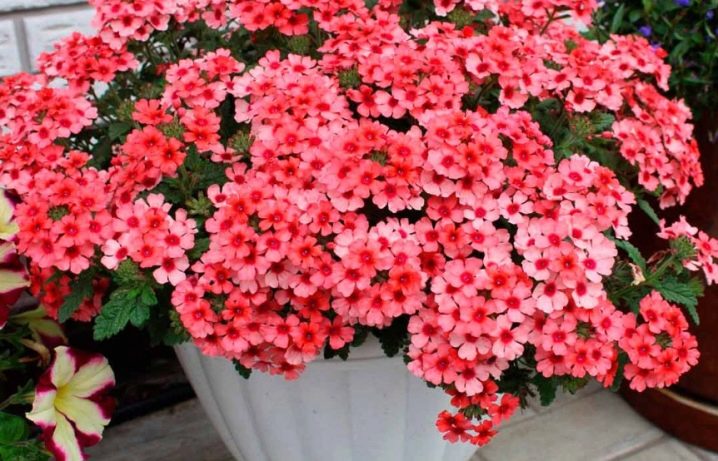
Ampel verbena refers to heat and light-loving crops. It is grown in well-lit areas, which allows for good branching and bushiness, which means abundant flowering.
In addition, the culture does not respond well to high humidity, which is why drainage is necessary. If there is no outflow of excess water, especially during a cold snap, this threatens not only decay, but also the appearance of fungal diseases.
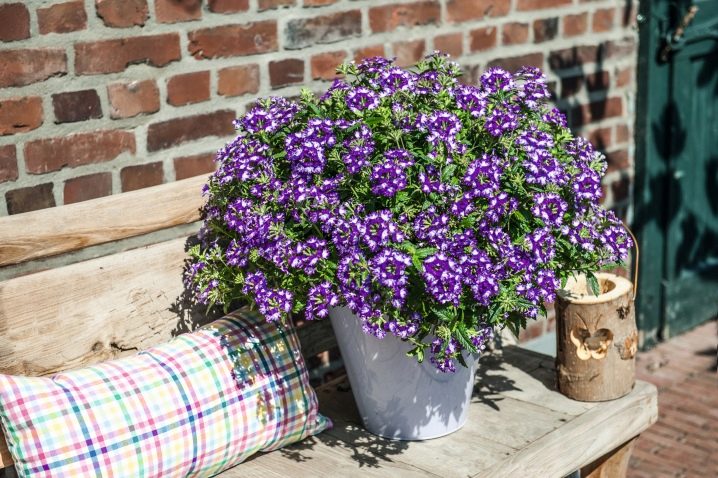
Verbena does not have special requirements for the soil composition, but develops best on loamy soil. Looseness is achieved by introducing coarse-grained river sand, the acidity level is reduced using dolomite flour or liming. A mulch made from decayed foliage and aged sawdust will help to retain moisture longer, relieve you of the need to loosen, and prevent the appearance of an earth crust.

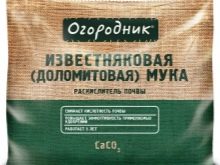
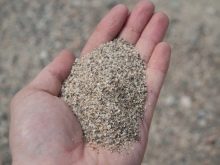
Seedlings are planted in open ground when it is warm and the ground is sufficiently warmed up. The exact timing depends on the climatic conditions. The soil for planting should be loose, breathable, nutritious, with a neutral acidity level. A drainage layer is required under a layer of fertile soil. The optimal distance between the roots is 20-25 cm. When transplanting from containers, it is recommended to remove the plants along with a lump of earth, since the roots do not recover well from damage. Remember the importance of good lighting.

Important: to obtain a beautiful bush, at least three cuttings are planted in a flower pot, and ± 50 plants are enough to obtain a highly decorative effect on a flower bed.
Growing care
Leaving after planting is not difficult, only traditional measures are required. Growing verbena in pots at home, on the balcony or outdoors in the street is available even to an inexperienced gardener.
- Watering... The culture needs moderate irrigation, without overflow and the formation of stagnant puddles.
- Top dressing... Almost all ornamental annuals require additional nutrition, and verbena is no exception. During the season, it is necessary to feed it 3-4 times with complex mineral fertilizers of a long (prolonged) action.
- Loosening... If mulching is not used, then this procedure should be carried out the next day after watering. An earthen crust must not be allowed to block the access of oxygen. At the same time, loosening destroys the roots of the surface weeds.
- Topping... This activity stimulates the formation of new shoots and more lush flowering, and also helps the formation of the bush. If we are talking about seedlings in a pot, then pinch the sprouts over 3-4 real leaves. In the case when the ampelous verbena is planted in a flower bed, there is no need to restrict growth. Free-growing shoots are able to form a flowering carpet from a limited number of roots. Each stem takes root and gives life to new shoots.

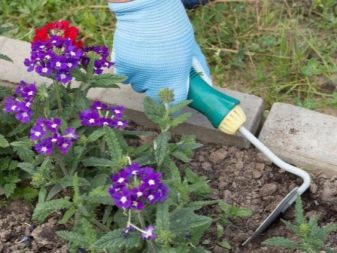

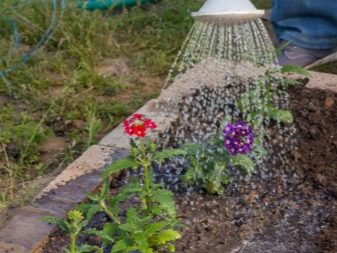
Pruning verbena is the removal of wilted inflorescences, overgrown or damaged shoots. In the first case, the reception stimulates the appearance of new buds, in the second, the gardener retains an attractive appearance of ampelous vervain.
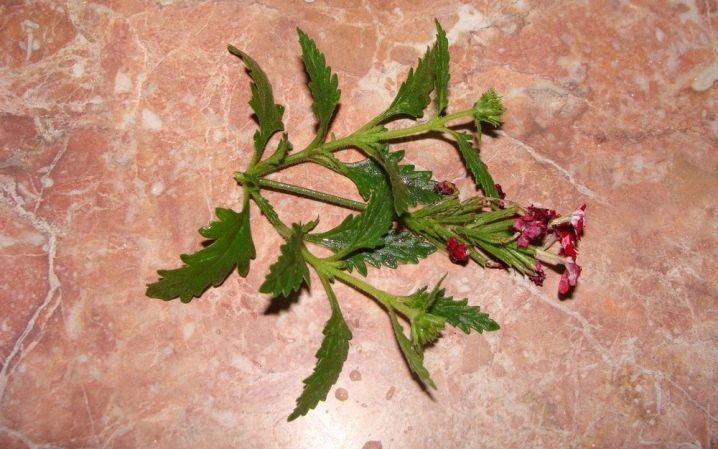
It must be remembered that you should take care of the ornamental crop regularly, you cannot leave it without care for a long time.
Reproduction
Ampel verbena is propagated in two ways: vegetative and sowing seed material. To properly root verbena cuttings or propagate it by seeds, you must follow a certain algorithm. It should be remembered that not all varieties can be obtained from seed. Hybrid vervains are propagated only by cuttings, since their seeds do not retain their parental qualities, in contrast to cuttings, which completely repeat the quality of the source.
Seeds
To obtain seeds, wait for the formation of capsules. They look like nuts, the seeds inside are ready when the capsules turn brown and become dry. Sowing is carried out in mini-greenhouses, exposing them in a well-lit place, for example, on a windowsill or under a phytolamp. The emerging seedlings need a humid atmosphere and mineral fertilizing with a high nitrogen content.
The seedlings are transferred to open ground after the onset of stable heat. In containers on closed balconies and loggias, it is placed after night temperatures acquire positive values there. Growing in indoor conditions does not depend on the indicators of the external environment.
Do not use flower seeds marked on the F1 packaging. Such varieties transmit their qualities only vegetatively.

Cuttings
For propagation by cuttings, the mother bush is placed for the winter in a cool room with a temperature range of 5-10ºC. They begin to cut the plant at the end of March.
- For rooting cuttings use neutral soil, composed of peat and coarse river sand. Sand must be washed and disinfected before making up the soil mixture to eliminate the risk of infectious diseases. Agroperlite successfully replaces sand.
- For grafting, cut off the final part of the shoot with 4-6 leaves. Each cutting should have at least a couple of leaves, which are shortened by about a third to reduce moisture evaporation.
- A centimeter segment with an oblique cut is left below, the upper part of the cutting is cut at right angles.
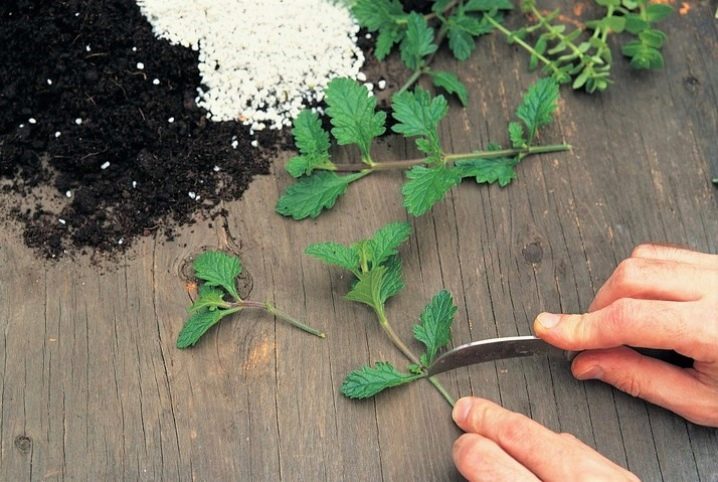
Before planting, the slices can be soaked in Kornevin's solution. After that, the greenhouse is covered with glass or polyethylene - materials that retain moisture and transmit light.
Diseases and pests
Verbena has strong immunity, a full-fledged plant never gets sick, which cannot be said about weakened specimens. Everything here is like that of people: a weak body is unable to withstand the harmful attacks of viruses and bacteria.
A weak bush can suffer from:
- decay of the root collar and root system as a whole;
- mold fungi;
- powdery mildew.
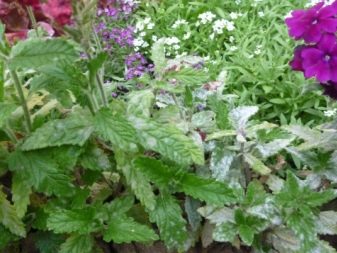
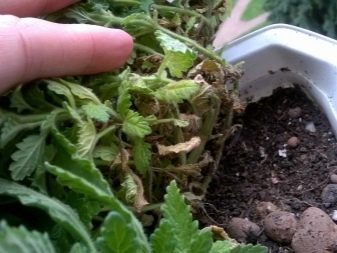
There is also a danger of necrotic manifestations and chlorosis. The first sign of illness is when the verbena leaves dry. In addition, pests such as:
- aphid;
- thrips;
- spider mite.

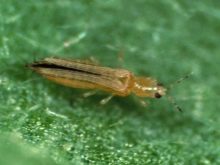

In the first case, fungicides and bactericides are used to combat ailments, and insecticides are used against insects. Failure to act upon detection of pests or signs of disease leads to the death of the annual.
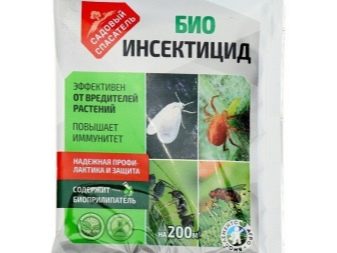
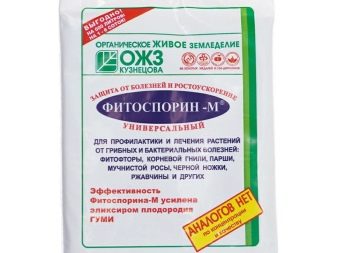
What plants does it go well with?
Ampel verbena is distinguished by a wide range of colors, a variety of varieties and a wide variety of external parameters. An excellent property of culture is its unique ability to organically combine with other species in flowerpots and flower beds. Verbena looks perfect with companions such as:
- asters;
- zinnias;
- petunias;
- marigolds, etc.
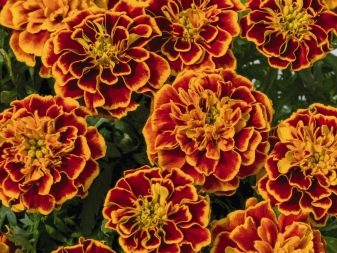
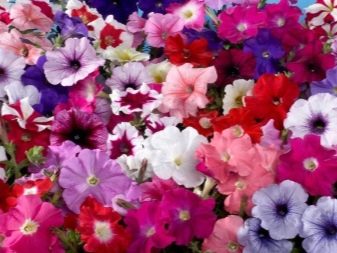
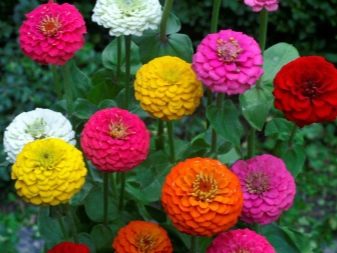
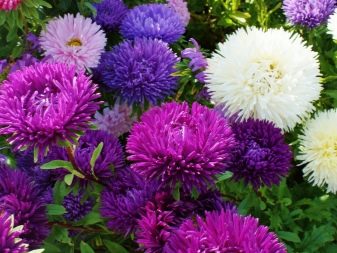
If you follow the principles and laws of landscape design, then with the help of the widest assortment of varieties, you can give a garden, backyard plot a subtle charm or catchy design... Different varieties can be used to make excellent compositional groups, original landscape solutions, etc.

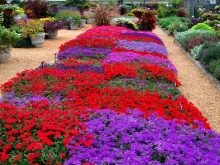
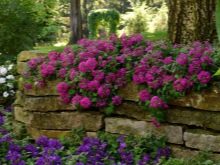
Verbena can be used as a ground cover or for vertical ornamental landscaping.







































































































The comment was sent successfully.